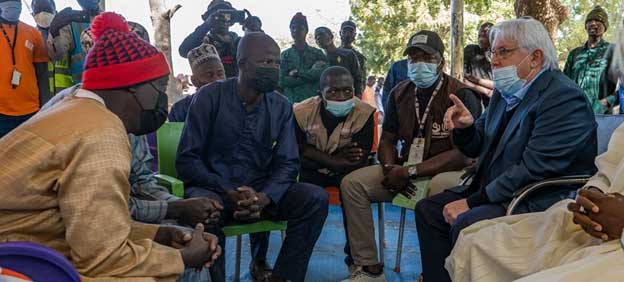[ad_1]
He stumbled upon the image of an unnamed grave and tears welled up in his eyes.
There have been so many troopers who fell in Laos. Some have been recognized and their stays have been returned to their households, however many had their names misplaced to the previous. It was the job of Son, an official on the Ha Tinh Army Command, to convey them again house.
The dry seasons are unforgiving in Laos, with a scorching solar and gusts of sizzling air. However they’re additionally the very best time to search out the stays of misplaced troopers since there are few asphalt roads in Laos and rains forestall automobiles from going uphill.
Son’s crew organizes an expedition every yearly to 2 Lao localities, Bolikhamsai and Vientiane. One lasts from October to January and the opposite from February to mid-Might.
The groups are cut up into smaller ones with six to eight members in every. They normally return house for the Lunar New 12 months, however since Covid-19 broke out they’ve remained in Laos and solely returned in the course of the wet season.
A seek for stays begins with an evaluation of tactical maps created by Vietnamese troopers previously to determine potential grave places, and likewise by way of the gathering of data from each Vietnamese and Lao veterans and locals who have been within the warfare.
Fighters collaborating within the Lao Civil Battle will also be a supply of data, however they’re typically troublesome to method and uncooperative.
A crew from the Ha Tinh Army Command searches for grave websites of Vietnamese troopers who died in Laos in the course of the warfare. Video by VnExpress/Duc Le
Earlier than every search, Son’s crew collect all out there info, together with potential grave websites, after which draw up an in depth plan for a full six months.
New crew members enroll in elementary Lao language programs for round two months for communication functions.
Son mentioned: “Details about the places of grave websites is just approximate. For larger accuracy, we have to search the cooperation of locals as a result of they’re those who know the realm, who know the place individuals died.
“However many Lao village heads and veterans at the moment are 75-80 years outdated, and their minds are now not as sharp as they was. Some village heads inform tales to their youngsters and grandchildren so they might assist us discover the grave websites, however second-hand info can typically be inaccurate.”
Grave websites are sometimes in distant areas. Prior to now, when Laos nonetheless allowed mechanized automobiles to run by way of forests, search groups might use them to journey to grave websites, and issues have been simpler.
However now, when the automobiles attain a village, crew members should be led by one or two village heads on foot for 3 to 5 kilometers to succeed in their vacation spot.
A crew must spend a day, three and much more than 10 generally earlier than it may return to camp. Every member has to hold 25 kg of bags, together with instruments like shovels and gloves, medicines and physique baggage. They normally choose areas with operating water to cook dinner and relaxation.
Years of expertise has taught Son {that a} deceased soldier might have been buried in varied methods. Those that have been buried by their comrades would lie in a grave 80 cm to a meter deep together with a bottle of tetracycline and a bit of paper with their title, age and hometown, and rocks would mark the spot.
Those that have been ambushed and by no means discovered by their comrades can be buried in shallow graves with tree branches on high.
Their stays are sometimes very troublesome to search out.
In Laos, the stays of Vietnamese troopers are sometimes present in inaccessible areas. Usually groups are misplaced in forests.
 |
|
Two individuals dig up a grave website to search out the stays of deceased Vietnamese troopers in Laos. Photograph by VnExpress/Duc Le |
Son remembers one journey on the finish of final 12 months after they went on the lookout for the graves of 10 troopers in Bolikhamsai. The journey was purported to final 5 days, and the climate was tremendous on the primary day. However on the second day rain got here pouring down instantly because the crew was attempting to maneuver uphill. The trail turned too slippery, forcing the crew to arrange a camp within the forest.
That was only the start since a storm had shaped and it stored pouring. A flash flood quickly swept away their camp together with a lot of their belongings.
With little to no meals left, the village heads who had accompanied the crew needed to search for bamboo shoots, edible leaves and different meals for the crew members to eat. The rains took 9 days to cease. The crew by no means managed to search out any grave and needed to postpone excavation plans to the following 12 months.
There was one other time in the course of the dry season of 2019 when, in Vientiane, a crew cleared an space of timber and was digging three meters into the earth to search out graves. However at a few meter’s depth they discovered three unusual objects.
“B41 mortars!” Son shouted.
Everybody moved to the facet to get out of the best way and referred to as in one other crew to cope with the mortars. They nonetheless had their fees intact.
After the unexploded ordnance was handled, the crew continued to dig and located the stays of two individuals together with a number of belongings like footwear and belts. The stays have been excavated in round two hours and introduced again to the bottom.
Within the case of unidentified troopers, bone samples are despatched to the protection ministry for forensic evaluation.
Colonel Nguyen Duc Dung, one other official on the Ha Tinh Army Headquarters, mentioned there have been instances when searches went properly however there have been additionally days when the crew needed to dig in the identical spots dozens of instances over to search out the stays.
“Each time we get to discover a [soldier’s] stays and their belongings, everybody feels at peace.”
[ad_2]
Source link



/cloudfront-us-east-1.images.arcpublishing.com/gray/GNN7GHUPT5FFXGEE5AAHTK2LRY.jpg)









